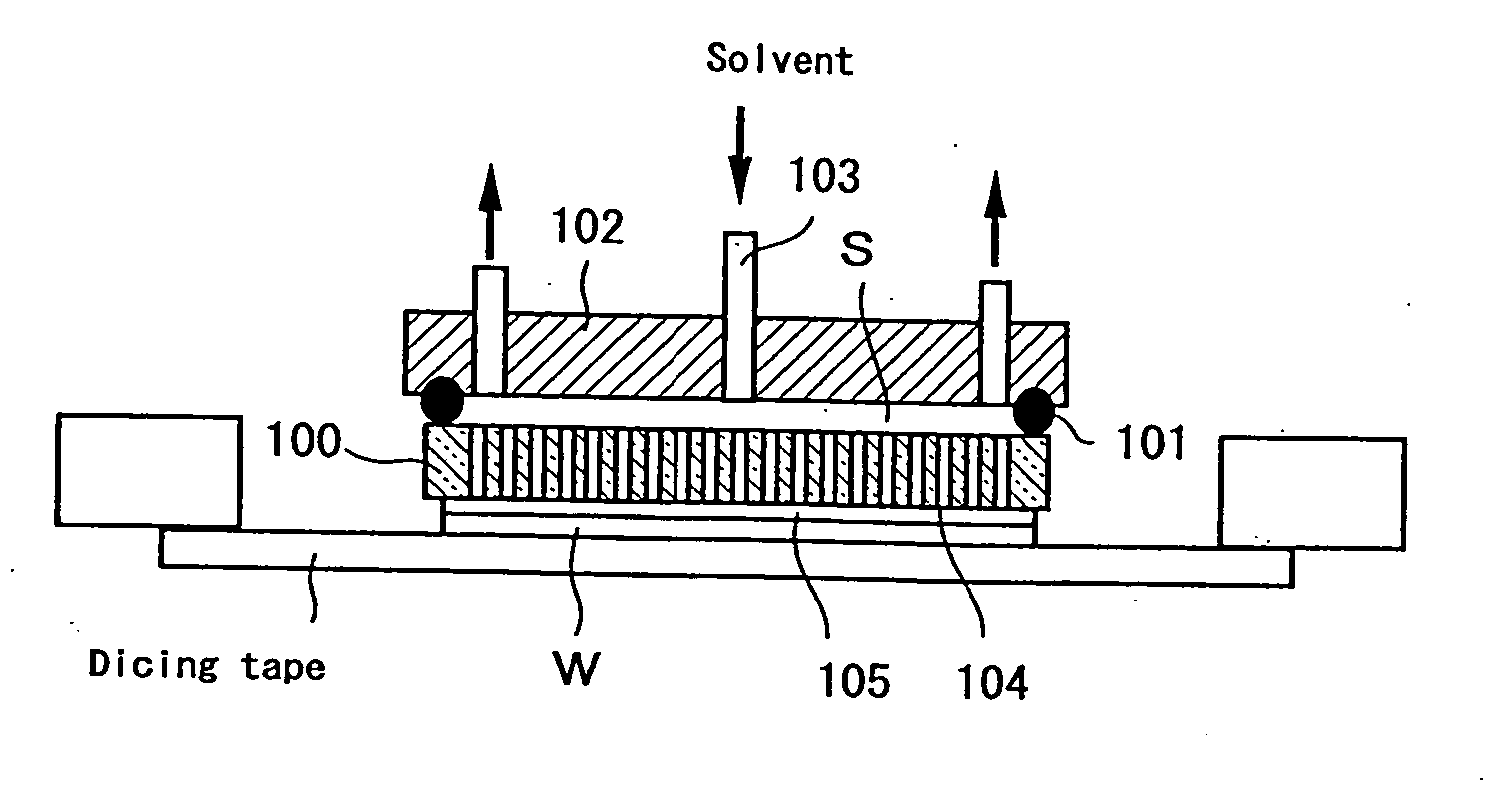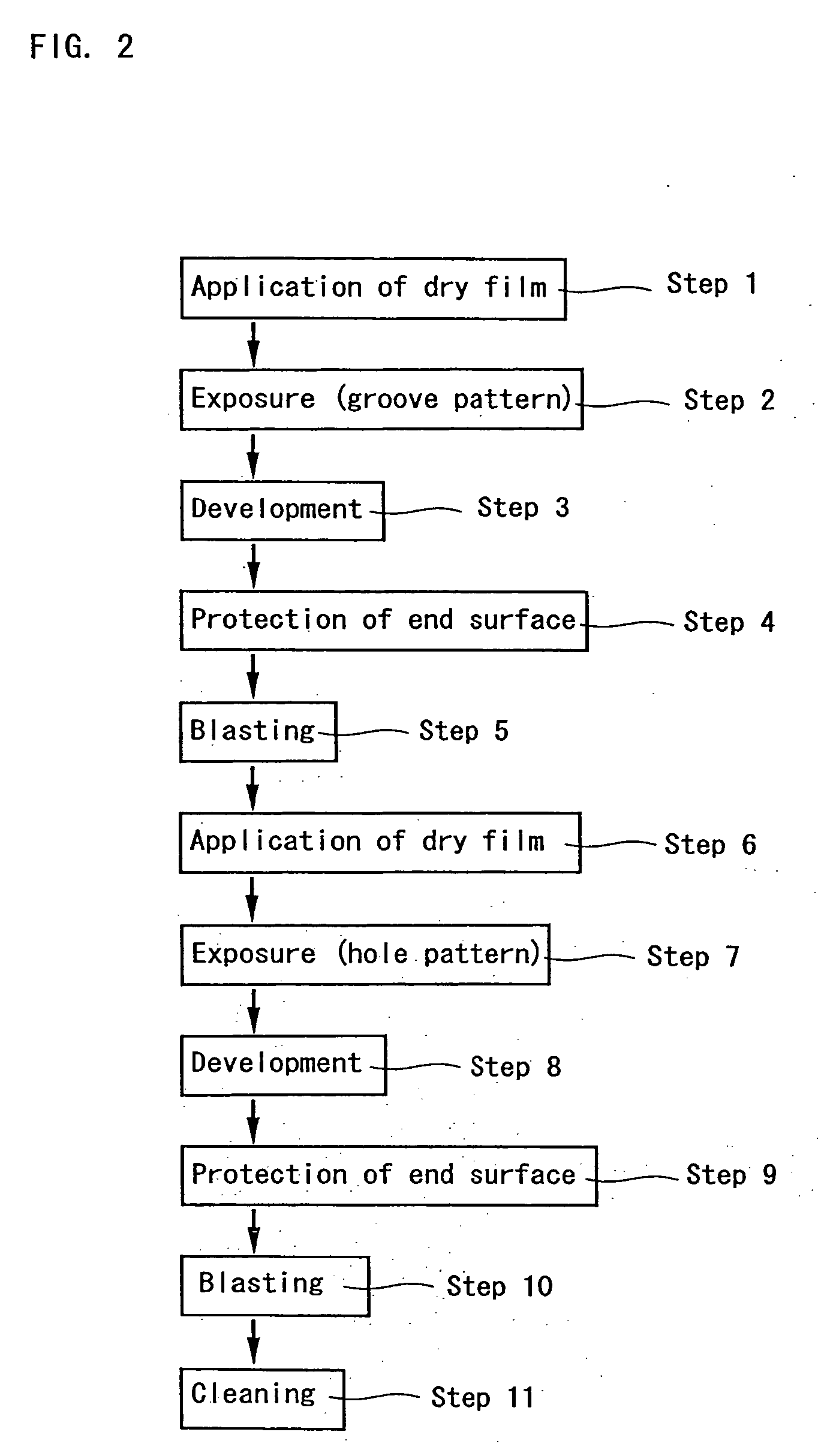Supporting plate, apparatus, and method for stripping supporting plate
- Summary
- Abstract
- Description
- Claims
- Application Information
AI Technical Summary
Benefits of technology
Problems solved by technology
Method used
Image
Examples
Embodiment Construction
[0043] Embodiments of the present invention will be described below with reference to the attached drawings. FIG. 1 is a schematic view showing an embodiment of a supporting plate according to the present invention, and FIG. 2 shows the process for forming a supporting plate.
[0044] A supporting plate 1 according to the present invention shown in FIG. 1 is made of a glass plate, a ceramic plate or a metal plate.
[0045] A circuit-formed surface of a semiconductor wafer W is bonded to one of the surfaces of the supporting plate 1 by using an adhesive, which is not shown in the drawing.
[0046] According to the present invention, the supporting plate 1 has a unique structure as described below.
[0047] A first penetrating hole 2 is formed in a substantially central portion (center) of the supporting plate 1 so as to penetrate in the thickness direction. A plurality of first penetrating holes 2 may be formed, and for example, four penetrating holes 2 are formed in FIG. 1. However, the num...
PUM
| Property | Measurement | Unit |
|---|---|---|
| Time | aaaaa | aaaaa |
| Thickness | aaaaa | aaaaa |
Abstract
Description
Claims
Application Information
 Login to View More
Login to View More - R&D
- Intellectual Property
- Life Sciences
- Materials
- Tech Scout
- Unparalleled Data Quality
- Higher Quality Content
- 60% Fewer Hallucinations
Browse by: Latest US Patents, China's latest patents, Technical Efficacy Thesaurus, Application Domain, Technology Topic, Popular Technical Reports.
© 2025 PatSnap. All rights reserved.Legal|Privacy policy|Modern Slavery Act Transparency Statement|Sitemap|About US| Contact US: help@patsnap.com



